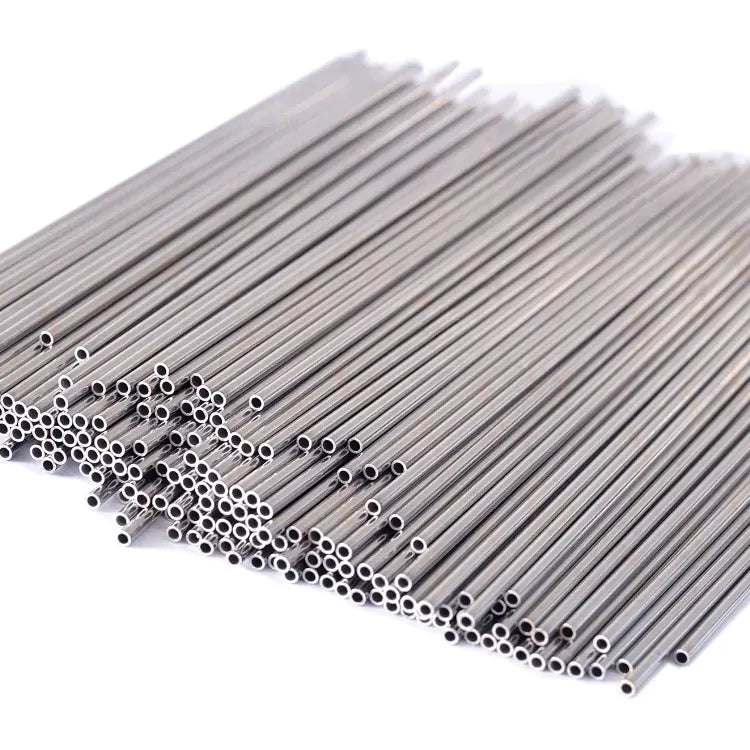
How to Buff Stainless Steel: A Simple Guide for a Perfect Shine
Table of Contents
Introduction
Stainless steel is a fantastic material—it’s strong, durable, and resistant to rust. But over time, it can lose its shine, develop scratches, or even start looking dull. If you want to restore its original luster, buffing is the way to go!
In this guide, we’ll walk you through the simple steps to buff stainless steel at home or in a workshop. Whether you’re polishing kitchen appliances, 434 stainless steel Round Bar, or any other stainless steel surface, this article will help you achieve the best results.
Let’s get started!
Why Buff Stainless Steel?
Before we get into the how-to part, let's talk about why buffing is important.
-
Restores Shine: Over time, stainless steel can get dull. Buffing brings back that mirror-like finish.
-
Removes Scratches: Small scratches can make stainless steel look old. Buffing smooths them out.
-
Prevents Rust and Stains: Dirt, grease, and moisture can cause discoloration. A well-buffed surface is easier to clean and maintain.
-
Improves Appearance: Whether it’s Round Bars, kitchen appliances, or car parts, polished stainless steel always looks better.
Now that we know why it’s important, let’s go step by step through the buffing process.
Essential Buffing Materials
You don’t need fancy tools to buff stainless steel. Here’s what you’ll need:
-
Soft microfiber cloths – for wiping and buffing
-
Mild dish soap and water – for cleaning before buffing
-
Baking soda or vinegar – for tough stains
-
Stainless steel polish or olive oil – to enhance the shine
-
Non-abrasive scrubbing pad or sponge – for stubborn spots
-
Buffing compound (optional) – for deep polishing
-
A power buffer (optional) – for large surfaces like 434 stainless steel Round Bar
If you don’t have a power buffer, don’t worry! You can still get great results using just a cloth and some elbow grease.
Surface Preparation
Before you start buffing, you need to clean the stainless steel thoroughly. Any dirt or grease left behind can make the buffing process harder.
How to Clean Stainless Steel:
-
Mix dish soap with warm water. Dip a microfiber cloth into the soapy water and wipe down the surface.
-
For stubborn stains, use vinegar or baking soda. Sprinkle baking soda on a damp cloth and gently rub the area. If using vinegar, spray it on the surface and wipe it off with a cloth.
-
Rinse with clean water and dry completely. Water spots can ruin the shine, so make sure it’s completely dry before moving on to buffing.
This step is crucial because if you buff a dirty surface, you’ll end up rubbing dirt into the metal, causing more scratches.
Manual Buffing Technique
Now comes the fun part—buffing! If you're working on a small piece, like Round Bars or kitchen appliances, you can do this by hand.
How to Buff Stainless Steel by Hand:
-
Apply a small amount of stainless steel polish or olive oil to a soft microfiber cloth.
-
Rub the cloth in the direction of the grain. Stainless steel has tiny lines running in one direction—always follow these lines for the best results.
-
Apply gentle but firm pressure as you rub. The goal is to work the polish into the surface.
-
Keep buffing until the surface starts to shine. This may take a few minutes, depending on how dull or scratched the metal is.
-
Wipe off any excess polish with a clean cloth to avoid streaks.
Buffing by hand takes time and effort, but for small areas, it works well. If you're polishing 434 stainless steel Round Bar or larger surfaces, you might want to use a power buffer.
Mechanical Buffing Process
If you’re buffing a bigger piece of stainless steel, like Round Bars or industrial equipment, a power buffer can make the job easier.
How to Buff Stainless Steel with a Power Buffer:
-
Attach a soft buffing pad to your power buffer.
-
Apply a small amount of buffing compound or stainless steel polish to the pad.
-
Turn on the buffer and move it slowly in the direction of the grain.
-
Keep the buffer moving to avoid burning the surface.
-
Wipe off any excess polish with a microfiber cloth.
A power buffer is great for steel suppliers and workshops where large pieces need to be polished regularly.
Surface Preservation
Once you’ve buffed your stainless steel to perfection, you’ll want to keep it looking great.
Easy Tips to Keep Stainless Steel Shiny:
-
-
Clean it regularly with a microfiber cloth to remove fingerprints and smudges.
-
Avoid harsh chemicals like bleach or ammonia, which can damage the finish.
-
Use stainless steel polish every few weeks to maintain the shine.
-
Store stainless steel properly—for example, 434 stainless steel Round Bar should be kept in a dry place to prevent moisture buildup.
-
Critical Errors to Avoid
1. Buffing Against the Grain
Always buff in the direction of the stainless steel grain. Going against it can cause streaks and scratches.
2. Using Abrasive Materials
Never use steel wool or rough pads. They can permanently damage the surface. Stick to microfiber cloths and non-abrasive sponges.
3. Skipping the Cleaning Step
If you don’t clean the stainless steel before buffing, you’ll trap dirt and make the surface look worse.
4. Using Too Much Polish
Less is more! Using too much polish can leave streaks and make the surface feel greasy.
Professional Recommendations
Buffing stainless steel isn’t difficult, but it does require patience and the right techniques. Whether you’re polishing kitchen appliances, Round Bars, or 434 stainless steel Round Bar, following these steps will help you achieve a perfect shine.
If you're looking for high-quality stainless steel materials, check out steel suppliers in your area. They often carry different grades, sizes, and finishes to suit your needs.
Now go ahead and give your stainless steel a good buffing—it deserves it! 🚀
